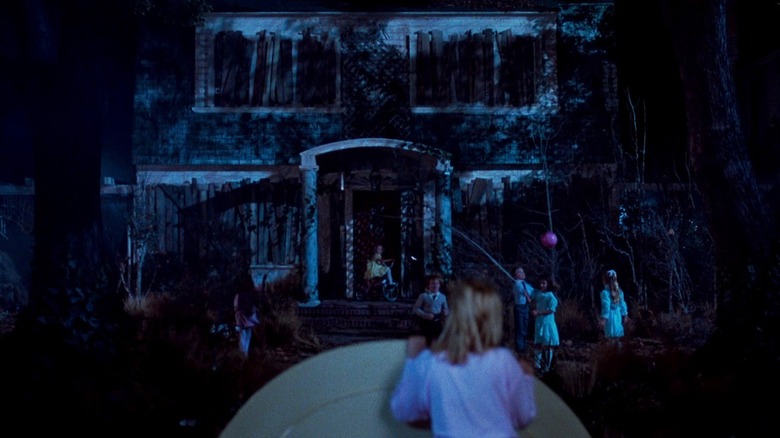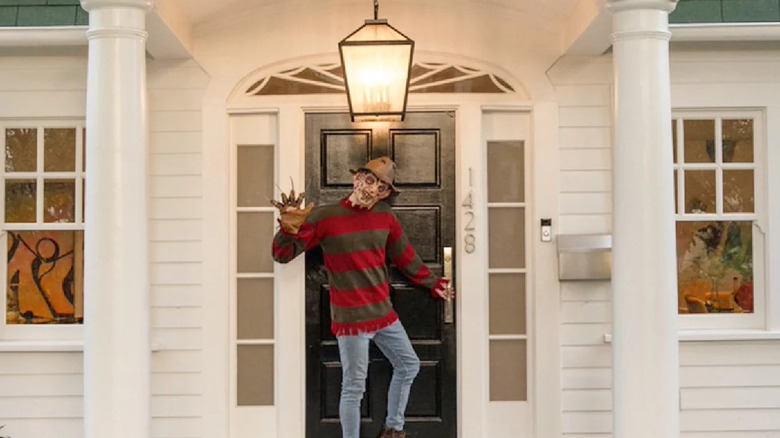The Original A Nightmare On Elm Street House Is For Sale - Sweet Dreams!
Dream Warriors, assemble! The idyllic suburban house from Wes Craven's original horror classic, "A Nightmare On Elm Street," is up for sale. If you have a spare $3.25 million, the slasher digs could be yours, but hurry — offers on the house are only being accepted until Halloween night this year.
Last owned by "Seeking a Friend for the End of the World" director Lorene Scafaria back in 2013 (bought for $2.1 million), the house, a two-story Dutch Colonial, sits not at 1428 Elm Street but at 1428 N. Genesee, centered in Los Angeles' Historic Spaulding Square. It boasts three bedrooms, four bathrooms, walnut floors weaving through archways, an open, retro-modern kitchen, built-ins, a grand primary suite, a separate laundry room, and multiple work-from-home options. Out back, the pricey home has a pool (so presumably, occupants could recreate their own version of the pool party scene in "Nightmare on Elm Street 2: Freddy's Revenge") and also features a detached guesthouse with its own covered patio, kitchen, and bathroom. Plenty of places for Freddy to come for you, and the listing photos for the house include a dressed-up Freddy in various spots, offering a guided tour. Though this Freddy looks more like a generic Sharp Hand Joe than the man whose own mother referred to him as "the bastard son of a hundred maniacs." You would think that a millionaire could spring the fifty bucks for the screen-accurate mask.
"Welcome to Prime Real Estate, B****!"
The house was used in Craven's "A Nightmare on Elm Street," a horror movie with dream worlds and shocking death sequences, released in 1984. In it, a burnt, disfigured killer named Freddy Krueger with a bladed glove has the power to access and control others' dreams, focusing this power on a group of teenagers in Springwood, Ohio. His biggest target is Nancy Thompson, who lives in the house pictured. 1428 Elm Street is also the site of the film's climax, wherein Nancy confronts Freddy and lures him through a series of booby traps throughout the interior.
Shot in just over a month with a budget of $2 million, Craven's film was not only the signal of a more energetic and stylistic Master of Horror (whose previous films like "Deadly Friend" lacked the refined storytelling "Nightmare" has) the genesis of a lucrative, long-running horror franchise (nine films!) and the launchpad for one of the biggest slasher icons in the pop-culture consciousness.

